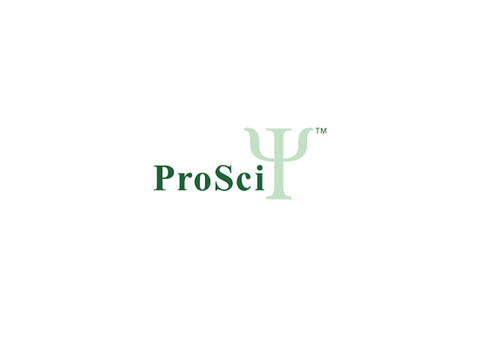Product Description
Wnt10a Antibody | 4639 | ProSci
Host: Rabbit
Reactivity: Human, Mouse, Rat
Homology: N/A
Immunogen: Wnt10a antibody was raised against a 14 amino acid synthetic peptide from near the carboxy terminus of human Wnt10a.
The immunogen is located within amino acids 300 - 350 of Wnt10a.
Research Area: Signal Transduction, Cancer
Tested Application: E, WB, IHC-P, IF
Application: Wnt10a antibody can be used for detection of Wnt10a by Western blot at 1 - 2 μg/mL. Antibody can also be used for immunohistochemistry starting at 5 μg/mL. For immunofluorescence start at 20 μg/mL.
Antibody validated: Western Blot in mouse samples; Immunohistochemistry in human and mouse samples and Immunofluorescence in human samples. All other applications and species not yet tested.
Specificiy: This Wnt10a antibody is predicted to not cross-react with Wnt10b.
Positive Control 1: Cat. No. 1283 - RAW 264.7 Cell Lysate
Positive Control 2: N/A
Positive Control 3: N/A
Positive Control 4: N/A
Positive Control 5: N/A
Positive Control 6: N/A
Molecular Weight: Predicted: 46 kDa
Observed: 46 kDa
Validation: N/A
Isoform: N/A
Purification: Wnt10a Antibody is affinity chromatography purified via peptide column.
Clonality: Polyclonal
Clone: N/A
Isotype: IgG
Conjugate: Unconjugated
Physical State: Liquid
Buffer: Wnt10a Antibody is supplied in PBS containing 0.02% sodium azide.
Concentration: 1 mg/mL
Storage Condition: Wnt10a antibody can be stored at 4˚C for three months and -20˚C, stable for up to one year. As with all antibodies care should be taken to avoid repeated freeze thaw cycles. Antibodies should not be exposed to prolonged high temperatures.
Alternate Name: Wnt10a Antibody: OODD, SSPS, STHAG4, Protein Wnt-10a
User Note: Optimal dilutions for each application to be determined by the researcher.
BACKGROUND: Wnt10a Antibody: Wnt10a is a member of the Wnt family, a gene family that encodes secreted signaling proteins that play crucial roles in normal development such as regulation of cell fate and patterning during embryogenesis as well as neoplastic transformation. Elevated levels of Wnt10a have been detected in several human tumors and cancer cell lines including colorectal cancer and chronic lymphocytic leukemia and it has been suggested that uncontrolled Wnt signaling may contribute to the defect in apoptosis that characterizes these malignancies. Recently, a mutation in Wnt10a was found to be associated with odonto-onycho-dermal dysplasia, an autosomal recessive ectodermal dysplasia.
 Euro
Euro
 USD
USD
 British Pound
British Pound
 NULL
NULL












